October 28th, 2014 — 9:56am
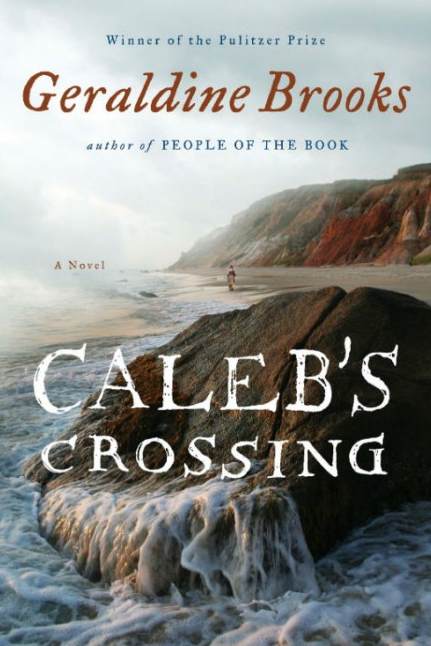 Caleb’s Crossing by Geraldine Brooks – Caleb is one of two Israelites who left Egypt and survived to see the Promised Land. Geraldine Brooks has given this name to a Native American who in her novel is befriended by a young girl who is from one of the new settlements in the New World. Their friendship and subsequent lives are the story of this book. It is a fictional account, not only of their relationship, but also of what it was like growing up in this New World colony in the mid 17th century, which is now known as Martha’s Vineyard. It shows the interactions of these settlers with the natives of this land who lived nearby. There actually was a Native American by the name of Caleb who not only lived during this time period but who was educated by the settlers and ultimately went on to be part of one of Harvard’s earliest graduating classes This transformation of Caleb who had to crossover from his tribal beliefs and receive a Christian education which led to attending at Harvard was an exciting adventure and the main storyline of this book. The author Geraldine Brooks captured the atmosphere and life style of this period. She does this by a well-researched description of the living conditions and societal roles of her characters. She also uses the language and grammar of that time which while understandable to the modern reader still requires some retreat to the dictionary (electronic one in my case) For example;
Caleb’s Crossing by Geraldine Brooks – Caleb is one of two Israelites who left Egypt and survived to see the Promised Land. Geraldine Brooks has given this name to a Native American who in her novel is befriended by a young girl who is from one of the new settlements in the New World. Their friendship and subsequent lives are the story of this book. It is a fictional account, not only of their relationship, but also of what it was like growing up in this New World colony in the mid 17th century, which is now known as Martha’s Vineyard. It shows the interactions of these settlers with the natives of this land who lived nearby. There actually was a Native American by the name of Caleb who not only lived during this time period but who was educated by the settlers and ultimately went on to be part of one of Harvard’s earliest graduating classes This transformation of Caleb who had to crossover from his tribal beliefs and receive a Christian education which led to attending at Harvard was an exciting adventure and the main storyline of this book. The author Geraldine Brooks captured the atmosphere and life style of this period. She does this by a well-researched description of the living conditions and societal roles of her characters. She also uses the language and grammar of that time which while understandable to the modern reader still requires some retreat to the dictionary (electronic one in my case) For example;
When the light faded the cold seeped through my clogs and set my chilblains a-throbbing, I returned to the house and found Solace, who had wakened from nap, mewling softly…
A good historical novel (which this one certainly qualifies) not only provides feasible facts and actions of the characters but also should examine important social and political themes of the times. The author accomplishes this requirement quite well. We witness the good intentions of this group of early settlers not only to trade and negotiate with but also to teach the Native Americans about their deeply held religious beliefs. We see how many of the Native Americans are impressed with the apparent power of prayer to the Christian God as they see these white worshippers being able to survive disease, which the Native Americans despite the prayers to their gods were not successful in doing. (This was probably because the Europeans had come to the New World with antibodies to Small Pox and other diseases). Some native leaders foresaw the ultimate complete loss of their land and way of life, which would occur, and tried to resist. We also are reminded of the subsequent wars between these two groups and the later discrimination towards the Native Americans on the part of the settlers. For example, despite Caleb’s great accomplishments as well as those of a few other Native Americans at Harvard at this time in the 1650s, it took a great many years before another Native American would attend Harvard.
Through this engaging story the author also examined the role of women in the culture of the new world settlers. It was the job of girls and women to arise early, draw the water, prepare and cook the food, work the fields, clean the clothes etc. Even in the most educated families where there were scholars and ministers, young girls were lucky if they learned how to read, let alone study languages and classic history which was quite valued by these people.
This was a captivating novel, which provided enlightenment about what life was like at this time for the people depicted in the story. It also provided an emotional experience for the reader as we could identify with the characters and appreciate their struggles, hope, aspirations and disappointments.
Comment » | FH - Fiction Historical
October 10th, 2014 — 11:50am
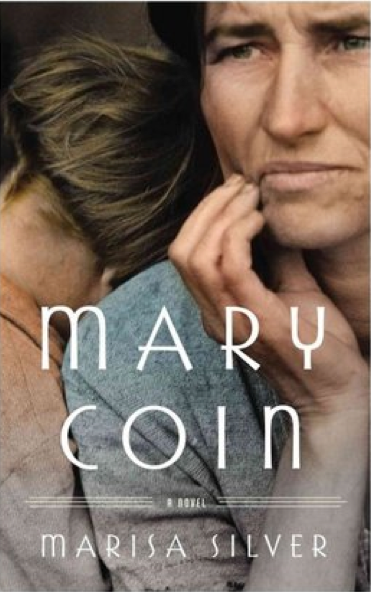 Mary Coin by Marisa Silver– It is a safe assumption, that just about everyone reading this review is familiar with the iconic photograph which is the book cover of the novel being reviewed. You probably know it was taken in California during the Great Depression, It has become known as the “The Migrant Mother.” But who are these people? Where did they come from, what was their life like and what was it like to live in those times? Marisa Silver the author of this novel was not content with just wondering about these things. She wanted to really understand what was going on. She obviously studied the history of this time and place, She created a story that goes beyond the picture but attempts to tell us about Florence Owens Thompson whom she names Mary Coin. She also tells us about the real photographer Dorothy Lange whom she gives the alias Vera Dare. With this latter character there actually have been a couple of biographies written over past 75 years, which could have, provided some important details to draw upon. There are no tell tale remnants of the main subject of the photo other than a letter that she wrote to a magazine complaining that she didn’t think it was right that the photographer should benefit from a personal image of her and her family. There is a third character created in this novel, which as far as I know is totally fiction. That is Walker Dodge, a college professor who studies cultural history by trying to find evidence of what people’s lives were really like in various time periods. Perhaps he is a stalking horse for the author. She does however take an imaginative poetic license in some of the plot that she develops about him.
Mary Coin by Marisa Silver– It is a safe assumption, that just about everyone reading this review is familiar with the iconic photograph which is the book cover of the novel being reviewed. You probably know it was taken in California during the Great Depression, It has become known as the “The Migrant Mother.” But who are these people? Where did they come from, what was their life like and what was it like to live in those times? Marisa Silver the author of this novel was not content with just wondering about these things. She wanted to really understand what was going on. She obviously studied the history of this time and place, She created a story that goes beyond the picture but attempts to tell us about Florence Owens Thompson whom she names Mary Coin. She also tells us about the real photographer Dorothy Lange whom she gives the alias Vera Dare. With this latter character there actually have been a couple of biographies written over past 75 years, which could have, provided some important details to draw upon. There are no tell tale remnants of the main subject of the photo other than a letter that she wrote to a magazine complaining that she didn’t think it was right that the photographer should benefit from a personal image of her and her family. There is a third character created in this novel, which as far as I know is totally fiction. That is Walker Dodge, a college professor who studies cultural history by trying to find evidence of what people’s lives were really like in various time periods. Perhaps he is a stalking horse for the author. She does however take an imaginative poetic license in some of the plot that she develops about him.
By following the life of Mary Coin we see what is was like in the Great Depression, especially among poor people but it is still difficult to get an emotional understanding of these times. How can a modern day reader empathize with a single mother of 3 children who working all day doing hard labor in a farm field, picking crops which requires that she be bent over most of the time? What if the jobs are scarce and she doesn’t get work? What kind of medicine is available for her kids at that time period and in the midst of poverty? How do you deal with pregnancy, childbirth or abortion in the 1930s in this setting? What do sexual favors mean if they help you get food for your children? How do relationships develop in this context?
The story also follows the life of Vera Dare. We meet her family, come to appreciate her life and childhood as well as the people in her life as an adult. Through the recounting of a speech that she made, we come to understand the early life of the photographer. We follow her to where she gets a job taking pictures for the government that would capture the life and poverty of that time. This is where she meets Mary Coin.
This book also deals with the question of what is a photograph? What does it mean to be the subject of the picture and is there really consent in such a setting? The picture we realize is one moment in time but in this situation it really does tell a deep meaningful story with just one click.
There is the unanswered question raised by the Florence Owens Thompson in the one letter that exists of her actual words as she challenges the idea that the photographer might have benefited from her plight. Ms. Lange the real photographer was working for the government and did not benefit directly from taking the picture. She obviously did so indirectly and this is part of her great legacy.
The iconic photograph has captured and preserved a moment in time as all pictures do. But because this one has reached and impacted millions of people, it takes on a special significance. It makes the numerous viewers want to understand what the people in it were experiencing at the time. Ms. Silver, the author extends the value of the picture by creating a story so we can know the lives of people of the time and place of the photograph. Like so many other historical novels, by reading it we have gained an insight and empathy about the subjects who are part of our humanity. Thus we are all richer for reading this book.
1 comment » | FH - Fiction Historical
September 27th, 2014 — 1:55pm
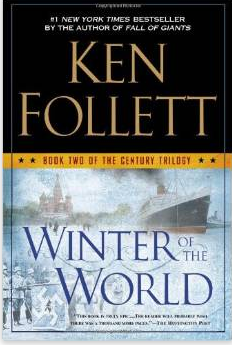 Winter of the World by Ken Follett– This #1 New York Times bestseller is book two of a trilogy by Ken Follett. It covers the time period 1933-1949. The book provides another opportunity for those of us who think we know this period of history as well newer generations of readers to experience the tumultuous times before, during and after World War II.Follett does this by following a wide variety of fictional individuals and families who are mainly German, British, Russian and American. The paths of these people frequently cross and interrelate. At the beginning of the book the author has a useful detailed listing of all these people, which could be very helpful in reminding you who they are as the reappear in various parts of the book. Unfortunately, I am an electronic reader and it was not convenient to jump back to that section. We meet most of these characters when they are teenagers. We follow a number of them through their groping first sexual experiences, which seems a little overdone. We do emerge with an inside view of rising fascism in Nazi Germany and the subsequent historical events. We are reminded that some people embraced Nazism and others clearly didn’t understand it until it was too late to object. One of the vignettes which stands out in my mind was the situation where two families in Germany were informed that their developmentally disabled children who were in a particular school were being transferred to a special hospital where “innovative research was being conducted which might help them.” One family member decided to personally investigate the situation with a clandestine visit to the hospital where she learned that their children as well as the old, infirmed, disabled, even babies were systematically being killed. This, of course, was only a small part of the Nazi extermination program. There were many vignettes depicting the horrors of the realities of combat on the various fronts of World War II. There also was some interesting and poignant insight into the plight of the idealistic men who volunteered to fight against Franco in Spain and were ruthlessly routed. There was an unforgettable scene in which a group of people who the readers had come to know, were visiting the brother of one of them who happened to be stationed in then peaceful Pearl Harbor on the day that the Japanese decided to attack. One of the most haunting scenes in the book was described in the chapter which dealt with the Russian soldiers who carried out wide spread rape of German women as they conquered their country in what they considered a payback for what the invading German armies had done to Russian civilians. There also were interesting insights presented into the politics of these times. Some of the people who we were following had personal or work relationships with Stalin, the British Prime Ministers as well as the American diplomats who formulated the post war policies including the Berlin Airlift and the Marshall Plan. All of these relationships and interactions became even more indelible because they were told through characters that the reader had come to know over 15- 20-year period, I certainly will look forward to catching up on Follett’s other two books of this trilogy as well as reading some of his other novels.
Winter of the World by Ken Follett– This #1 New York Times bestseller is book two of a trilogy by Ken Follett. It covers the time period 1933-1949. The book provides another opportunity for those of us who think we know this period of history as well newer generations of readers to experience the tumultuous times before, during and after World War II.Follett does this by following a wide variety of fictional individuals and families who are mainly German, British, Russian and American. The paths of these people frequently cross and interrelate. At the beginning of the book the author has a useful detailed listing of all these people, which could be very helpful in reminding you who they are as the reappear in various parts of the book. Unfortunately, I am an electronic reader and it was not convenient to jump back to that section. We meet most of these characters when they are teenagers. We follow a number of them through their groping first sexual experiences, which seems a little overdone. We do emerge with an inside view of rising fascism in Nazi Germany and the subsequent historical events. We are reminded that some people embraced Nazism and others clearly didn’t understand it until it was too late to object. One of the vignettes which stands out in my mind was the situation where two families in Germany were informed that their developmentally disabled children who were in a particular school were being transferred to a special hospital where “innovative research was being conducted which might help them.” One family member decided to personally investigate the situation with a clandestine visit to the hospital where she learned that their children as well as the old, infirmed, disabled, even babies were systematically being killed. This, of course, was only a small part of the Nazi extermination program. There were many vignettes depicting the horrors of the realities of combat on the various fronts of World War II. There also was some interesting and poignant insight into the plight of the idealistic men who volunteered to fight against Franco in Spain and were ruthlessly routed. There was an unforgettable scene in which a group of people who the readers had come to know, were visiting the brother of one of them who happened to be stationed in then peaceful Pearl Harbor on the day that the Japanese decided to attack. One of the most haunting scenes in the book was described in the chapter which dealt with the Russian soldiers who carried out wide spread rape of German women as they conquered their country in what they considered a payback for what the invading German armies had done to Russian civilians. There also were interesting insights presented into the politics of these times. Some of the people who we were following had personal or work relationships with Stalin, the British Prime Ministers as well as the American diplomats who formulated the post war policies including the Berlin Airlift and the Marshall Plan. All of these relationships and interactions became even more indelible because they were told through characters that the reader had come to know over 15- 20-year period, I certainly will look forward to catching up on Follett’s other two books of this trilogy as well as reading some of his other novels.
Comment » | FH - Fiction Historical
August 19th, 2014 — 11:52am
The Invention of Wings by Sue Monk Kidd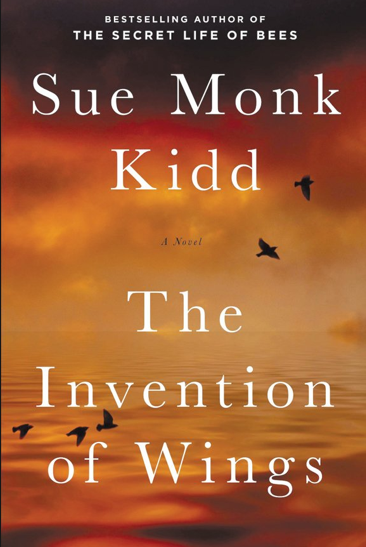
It is less than 200 years ago that slavery was a fixture in this country. As part of the curriculum in American schools we learn about this horrific treatment of human beings in the South and how the North tolerated this institution until the Emancipation Proclamation and ultimately the Civil War. However, I wonder if each succeeding generation of Americans really understands and appreciates what it was like to be enslaved in America and how this was accepted as part of everyday life by so many of the white people? When the award winning movie Twelve Years a Slave was released, there were some people who were disturbed by it because they felt it was too “painful to watch.” We are fortunate that there are filmmakers and in this case an author who can find a creative approach, to not only tell the story of slavery in the United States, but to do it a way that we not only understand what went on but that we can also have some idea of how the victims of slavery felt. I will say that this empathic experience for the most part extends to the oppressed rather than to understand the mindset of so many people who accepted this institution without question.
In this book we mostly follow two women for most of their lives. One is Sarah Grimke, born into a wealthy Charleston family at the beginning of the 19th century. Her father was a prominent judge, her mother was a socialite, her brothers were destined to be prominent lawyers and she and her sisters were expected to follow in her mother’s footsteps. Slavery was a way of life and there were 15- or so “Negroes” living in their house, each of whom had various duties. When there were children of the slaves, they would be brought up to follow in their parent’s footsteps. In fact, one such young girl was Hetty Handful who was presented to Sarah as a present for her 11th birthday to be her personal “slave.” Sarah rejects this plan, as much as a girl her age can reject the rules and the plan of the family. She secretly begins to teach Hetty to read which is forbidden. We meet Sarah’s father, the patriarch of the family and we see his acceptance of slavery with barely a reservation as well as his clear ideas about the limited role of women. We meet Charlotte, Hetty’s mom and a most skillful seamstress but a woman who knows where she came from and what she will never accept.
The reader becomes a fly on the wall in this household for the next several years as these girls grow up. We come to know the other members of this household, both slave and non-slave. We learn about the courting tradition, as Sarah and her sisters are formally allowed meet men at the proper time. The reader is introduced to how the slaves are punished when they make mistakes which can be a whipping or even worse (and the latter is described in vivid detail). Sarah develops a very close relationship with one of her younger sisters Nina, as at her own requests she is granted the role of godmother to her. Not surprising, their social values are quite similar and we are able to follow their fascinating paths, as both become prominent abolitionists. As in any good novel there are various sub stories. While the chapters alternate between “ Sarah “ and “ Hetty,” the fate of Charlotte, Hetty’s mother and Nina, Sarah’s special sister, inform the latter part of the book. As the story progresses, it also becomes clear that this not only a story about slavery in the United States but it is also about the beginning of the fight of woman to achieve equality in this country.
In fact, I don’t believe that it will spoil your enjoyment of this compelling novel, if I reveal what the author has put in a note at the conclusion of the book. That is that Sarah Grimke and her sister Nina Grimke were real people. They both became prominent abolitionists as well as advocates for women’s rights despite some concerns by supporters who believed that such rallying might dilute the difficult fight against slavery. While the dialogue, many subplots and storylines were the author’s imagination, other events and even some quotes were taken from some writings, biographies and historical reports which therefore confirms the feel of this story, which is one of authenticity. It is a book that captivates and holds you until the last line!
Comment » | FG - Fiction General, FH - Fiction Historical
August 14th, 2014 — 5:28pm
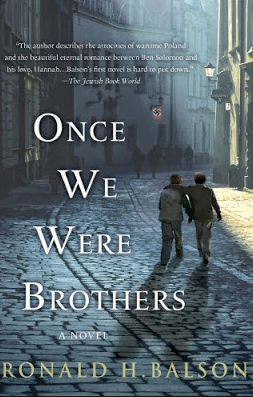 Once We Were Brothers. – By Ronald H. Balson- I am always interested in another Holocaust novel. Perhaps I don’t want to forget (how could one forget?). Or perhaps it is the trying to figure out how would I have handled these horrible situations had I been born a few generations earlier where some of my ancestors had lived and died. It helps that the author in this case; Ronald Balson has a fresh perspective. He introduces us to situation where Ben Solomon, an elderly Holocaust survivor confronts Elliot Rosenzweig, a very wealthy Chicago philanthropist, of actually being Otto Piatek, a prominent Nazi who executed many Jews in Poland during WW II. On top of this he tells a story how Otto as a young boy had been taken into his household before the war after his own parents abandoned him. When the Nazi’s came to power his parents returned to take the 18 year old back to Germany where he became a high-ranking Nazi who was soon to be assigned to Poland. The now wealthy Chicago man denies this accusation and the plot unfolds as Ben relates his story to Catherine who he hopes will be his attorney in what he wants to be a public lawsuit to expose this man for stealing his and other family’s money and jewels as well as participating in the murder of so many Jews. Ben painfully reveals his memory of the events of his childhood growing up with this man and the hope that Ben’s parents had that the child they had taken in would help them from his new position. Using this vehicle, the horrific details of the plight of the Jews in Poland are related. So many historical details were worked into the story that I had the impression that this first time author had on his writing desk a history book of all the events that happened in Poland at that time There were twists and turns but there were all familiar situations: the gradual tightening of the noose around the neck of the Jews as they were moved into the Ghetto and eventually were taken to concentrations camps. There was the good Priest hiding some Jews and the underground resistance doing it’s thing and of course the horrendous course of events for so many Jews. It was also a personal story of certain people who we came to know and care about as events transpired during the war and now in modern times as the possibility of a legal trial became a reality.
Once We Were Brothers. – By Ronald H. Balson- I am always interested in another Holocaust novel. Perhaps I don’t want to forget (how could one forget?). Or perhaps it is the trying to figure out how would I have handled these horrible situations had I been born a few generations earlier where some of my ancestors had lived and died. It helps that the author in this case; Ronald Balson has a fresh perspective. He introduces us to situation where Ben Solomon, an elderly Holocaust survivor confronts Elliot Rosenzweig, a very wealthy Chicago philanthropist, of actually being Otto Piatek, a prominent Nazi who executed many Jews in Poland during WW II. On top of this he tells a story how Otto as a young boy had been taken into his household before the war after his own parents abandoned him. When the Nazi’s came to power his parents returned to take the 18 year old back to Germany where he became a high-ranking Nazi who was soon to be assigned to Poland. The now wealthy Chicago man denies this accusation and the plot unfolds as Ben relates his story to Catherine who he hopes will be his attorney in what he wants to be a public lawsuit to expose this man for stealing his and other family’s money and jewels as well as participating in the murder of so many Jews. Ben painfully reveals his memory of the events of his childhood growing up with this man and the hope that Ben’s parents had that the child they had taken in would help them from his new position. Using this vehicle, the horrific details of the plight of the Jews in Poland are related. So many historical details were worked into the story that I had the impression that this first time author had on his writing desk a history book of all the events that happened in Poland at that time There were twists and turns but there were all familiar situations: the gradual tightening of the noose around the neck of the Jews as they were moved into the Ghetto and eventually were taken to concentrations camps. There was the good Priest hiding some Jews and the underground resistance doing it’s thing and of course the horrendous course of events for so many Jews. It was also a personal story of certain people who we came to know and care about as events transpired during the war and now in modern times as the possibility of a legal trial became a reality.
Although I have experienced many other books and movies about the Holocaust, I was still engrossed and moved by this book. It was not one of the best of the lot on this subject but if you are drawn to this subject you will not be disappointed.
Comment » | FH - Fiction Historical
August 8th, 2014 — 4:47pm
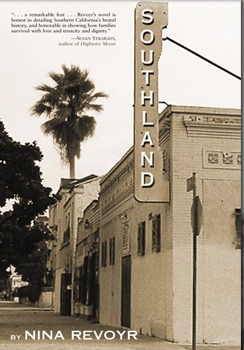 Southland by Nina Revoyr– Having recently read and reviewed a great book mostly about social justice in Los Angeles ( see previously reviewed book in this blog) which included some insight into the history of racial conflicts and violence in this city, I was very receptive to picking up this novel. In fact, it did deal with these subjects with a compelling storyline which focused on the struggles of Japanese-Americans including their relationships with African Americans in Los Angeles over the past 50 plus years.
Southland by Nina Revoyr– Having recently read and reviewed a great book mostly about social justice in Los Angeles ( see previously reviewed book in this blog) which included some insight into the history of racial conflicts and violence in this city, I was very receptive to picking up this novel. In fact, it did deal with these subjects with a compelling storyline which focused on the struggles of Japanese-Americans including their relationships with African Americans in Los Angeles over the past 50 plus years.
The opening setting is the 1990s and Jackie Ishida is a Japanese-American young woman, preparing to enter law school and who also happens to be a lesbian whose grandfather Frank Sakari suddenly passes away. She comes into possession of a forgotten old box in his closet, that had a few clippings, some pictures and a great deal of cash with a note that it should be given to Curtis, a young teenager who worked in his old grocery store that was destroyed in Watts riots. It is well known to the family that those difficult times were very traumatic for many people including Frank not only because of the destruction brought about by riots but because in midst of them, Curtis and 3 younger boys were found locked in the grocery store freezer, having frozen to death. It was thought by some that this murder was the work of an unpopular white police officer who was known for mistreating kids in the neighborhood and was reportedly seen talking to them at the store on day of the tragedy. Jackie is moved to try to find more details. She connects with James Lanier, an African American who was Curtis’cousin. Once she talks to him, they team up to try to find out what really happened, in order to try to bring about some kind of long delayed justice. They embark upon a road trip (mostly limited to the Los Angeles area) where they interview several people who could shed light on this dastardly crime.
As the author follows this duo, she also provides flashbacks to earlier times to allow us to understand not only the characters in some depth but also the social climate of Southland, American, also known as Los Angeles. This includes the history of the Japanese who settled in this area and were sent to internment camps during World War II. We also learn about those young men who enlisted and fought in the War including some of the famed accomplishments of the Japanese American 442 regiment. The story that Jackie and James uncover is more than a study of how race relations played out during the past 50 years but it is also is a very personal moving story about her grandfather. She also finds meaningful insight into herself.
This 2003 novel deservedly won several awards. However, it did not hold me on edge of my seat or qualify as a page turner despite it being a great example of a “cold case being brought to life.” Some of the flashbacks, while necessary for insight into the characters, did seem to slow the flow of the book. A good part of the theme of this book also qualifies as an example of the search for biological roots which I have found in many true life clinical cases as well as a major storyline numerous motion pictures. See my blog about this subject.
Comment » | FG - Fiction General, FH - Fiction Historical, FM - Fiction Mystery
May 9th, 2013 — 10:41pm
 The Storyteller by Jodi Picoult – After reading this book I reflected on where did I learn the details about the Holocaust? It wasn’t in any formal class that I took in public school or in college. It may have been in Hebrew School prior to my Bar Mitavah. It was in very general terms from members of my family none of whom that I knew of was a survivor or closely related to one. It was enhanced by books I read and movies I saw such as The Diary of Ann Frank, Schindler’s List, Sophie’s Choice plus so many more as well as some more contemporary movies that have recently emerged (and we have reviewed elsewhere) such as No Place on Earth, In Darkness, Iron Cross, Four Seasons Lodge. However, nothing is more informative and powerful than a well written novel such as this one in which it’s authenticity is based on the author’s research and a well written thoughtfully honed scenario. while, I didn’t learn any new facts or any basic history that I did not know, I am glad to be reminded and stimulated by this book. I also am glad that this best selling novel will be available to our younger generations from teens up who can learn about what happened on the ground and in the concentration camps. All that being said and in addition to this being the authors 5th book on the NY Times #1 slot for best selling book, the story raises some very challenging ethical questions. Sage, the main character, is a young woman who works as a baker in a bakery in a New England town. She meets a 93 year old widow who is a well known retired school teacher with a reputation as a very kind old man. However, he has a secret which he confides to Sage and that is that 65 years ago he was a SS officers in a Nazi concentration camp. Sage’s elderly grandmother is a survivor of the holocaust who was in that concentration camp who has a hidden story to tell. She also since childhood has been a writer or storyteller. Her fantasized stories which are weaved throughout the book are allegories and philosophical explorations of the human psyche and ethical dilemmas that the characters in the real story are considering Our ex- Nazi after befriending Sage and telling her his story in some detail asks Sage to help him end his life. As part of this wish is his other wish to be forgiven. As readers one step and nearly 70 years removed we can ponder what the right thing is to do. Who can forgive but the victims but they have been murdered and most of the survivors are gone. What about the value of the US government hunting even these elderly Nazis and deporting them? Package this all in a page turner or a button pusher (on my Kindle) and you have a great book.
The Storyteller by Jodi Picoult – After reading this book I reflected on where did I learn the details about the Holocaust? It wasn’t in any formal class that I took in public school or in college. It may have been in Hebrew School prior to my Bar Mitavah. It was in very general terms from members of my family none of whom that I knew of was a survivor or closely related to one. It was enhanced by books I read and movies I saw such as The Diary of Ann Frank, Schindler’s List, Sophie’s Choice plus so many more as well as some more contemporary movies that have recently emerged (and we have reviewed elsewhere) such as No Place on Earth, In Darkness, Iron Cross, Four Seasons Lodge. However, nothing is more informative and powerful than a well written novel such as this one in which it’s authenticity is based on the author’s research and a well written thoughtfully honed scenario. while, I didn’t learn any new facts or any basic history that I did not know, I am glad to be reminded and stimulated by this book. I also am glad that this best selling novel will be available to our younger generations from teens up who can learn about what happened on the ground and in the concentration camps. All that being said and in addition to this being the authors 5th book on the NY Times #1 slot for best selling book, the story raises some very challenging ethical questions. Sage, the main character, is a young woman who works as a baker in a bakery in a New England town. She meets a 93 year old widow who is a well known retired school teacher with a reputation as a very kind old man. However, he has a secret which he confides to Sage and that is that 65 years ago he was a SS officers in a Nazi concentration camp. Sage’s elderly grandmother is a survivor of the holocaust who was in that concentration camp who has a hidden story to tell. She also since childhood has been a writer or storyteller. Her fantasized stories which are weaved throughout the book are allegories and philosophical explorations of the human psyche and ethical dilemmas that the characters in the real story are considering Our ex- Nazi after befriending Sage and telling her his story in some detail asks Sage to help him end his life. As part of this wish is his other wish to be forgiven. As readers one step and nearly 70 years removed we can ponder what the right thing is to do. Who can forgive but the victims but they have been murdered and most of the survivors are gone. What about the value of the US government hunting even these elderly Nazis and deporting them? Package this all in a page turner or a button pusher (on my Kindle) and you have a great book.
Comment » | FH - Fiction Historical
December 1st, 2012 — 3:26pm
 Dark Star by Alan Furst
Dark Star by Alan Furst
I don’t recall every reading a spy story from the point of view of a Russian agent before and during World War II. This is what makes this novel by Alan Furst unique and quite interesting. It does seem logical that the various Russian spy agencies would be very concerned about Hitler’s rise to power. The main protagonist is a Russian journalist Nanzsura who in order to survive himself gets drawn deep and deeper into the intricacies of being a full fledged undercover spy. The novel is well written and provides an exciting pace with secret meetings, elaborate techniques of passing information, the requisite beautiful women, double agents, murder, secret codes and whatever else you would imagine should be in a story about this subject. It also is filled with many Russian names of people, streets and other named locations as well as ample mention of Russian authors and specific events that happened in Russia at various times that are difficult to follow by a non student of Russian history and culture. I would imagine the story would be more enjoyable if the reader had a better familiarity with all these names and events.
Comment » | FH - Fiction Historical
May 29th, 2012 — 1:25am
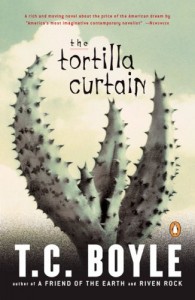
Tortilla Curtain by T.C. Boyle– In the past few years I have read various books about the plight of oppressed immigrant groups as they struggle to make it in America at different times in our history. This includes, Chinese, Japanese, and of course European immigrants including Holocaust survivors. However this is the first book that I have read about this subject in which most of the action takes place in locations, which would be less than 15-minute drive from my home in Woodland Hills California. Tortilla Curtain is the story of Mexican immigrants struggling for a foothold in the America, which happens to be near and about Topanga Canyon in the San Fernando Valley. A young Mexican woman interestingly named “America” and her slightly older husband Candidio are smuggled across the border in in an effort to do what so many of our ancestors have done. That would be to attempt to achieve some version of what they see as the American dream. The other main focus of this story is Delaney, a self proclaimed liberal who lives with his wife Kyra, a successful real estate agent and her son Jordon from a previous marriage. They live in a spacious community that progresses from a gated community to a walled community because of the real and the perceived dangers from coyotes as well as from some of the Mexican immigrants. The author T.C. Boyle allows the reader to know both sets of characters and their back-story. We come to appreciate Delaney and his wife’s frustration as they see their beloved dogs snatched away by coyotes who follow their own natural inclination to survive. They also have a run in with some of illegal Mexican immigrants who we come to know as honest, hard working people who are following their own natural instincts to survive. They want to earn a living and provide for their themselves and ultimately for their family. Delaney is turned into an angry, revengeful, vicious man and his wife is depicted as a self-indulgent women. As the story progresses the reader loses any empathy or identification, which they may originally, had for them. I neglected to say that Delaney by occupation is a writer who studied and wrote about nature and all it’s little creatures with special emphasis on the environment. This becomes an ironic point because it is the natural instincts of America and Candido as well as the other immigrants who are just also trying to survive in their environment which brings them into conflict with Delaney and his neighbors. Even a cursory study of the natural climate factors in this area would lead one to understand that FIRE is required to keep nature in balance but when a fire is accidentally set by those trying to survive or by just by lightning, it becomes the immigrants who are blamed. This probably is not very much different than when the Jews are blamed for bad economic times or when any other persecuted group is blamed for the frustrations of the group in power. This is a powerful story and if you live near where the story takes place, it feels more personal even if you truly believe that we are past most of this type of thinking
Comment » | FH - Fiction Historical
May 29th, 2012 — 1:12am
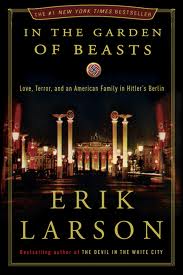
In The Garden of Beasts by Erik Larson – Just when it seems that everything has been written about the rise of Nazism, a new work come along that sheds further insight on this horrific piece of history. Erik Larson ( author of The Devil in the While City ) allows us to see this morbid piece of history through the eye of William Dodd, a university professor who was chosen by President Franklin Roosevelt to the US Ambassador to Germany in the 1930s, just as Hitler is coming to power. He, his wife and two grown children, Bill and Martha come to Berlin bringing their old Chevy with them so Dodd could try to avoid an ostentatious diplomatic life style and live within his meager salary. Never the less he did attend the lavish diplomatic events as required. He got know the rising Nazis and witnessed first hand the slow but sure disenfranchisement of the Jews living in Germany and the ultimate brutality of the Nazis. His daughter Martha can only be described as a free spirit. She dated and romanced several young German officers, a Russian spy and even was introduced by one of her boyfriends to Adolph Hitler who kissed her hand. Both father and daughter at first didn’t appreciate the significance of the changing atmosphere in Germany. Initially, they even seemed to sympathize with what they thought was seemingly innocuous anti-Semitic views expressed by some of the German leaders and many of the German people. Both did come to understand the true nature of the new German rulers. They saw not only was it undemocratic but it was cruel and inhuman. From early on in his stay Dodd felt some of the people in the state department and even some from his staff badmouthed him because they felt he didn’t fit in this “old boys” network. It was Ambassador Dodd who tried to inform his superiors in Washington of what was happening in Germany but he was minimized by many voices in the US state department. The impression is given that Roosevelt did understood the reality but couldn’t speak out or take action because the mood of the US was not ready. In the end Dodd came out a hero-although a lonely voice that obviously never made a difference but deserves to be remembered.
The authenticity of the narration is supported by detailed research, which Larson documented at the end of this book. This included a meticulous review of archives from all over the world, biographies, memoirs published and unpublished. There would seem to be no doubt that the reader has viewed the birth and growth of the Nazi beast from a unique vantage point.
Comment » | FH - Fiction Historical
 Caleb’s Crossing by Geraldine Brooks – Caleb is one of two Israelites who left Egypt and survived to see the Promised Land. Geraldine Brooks has given this name to a Native American who in her novel is befriended by a young girl who is from one of the new settlements in the New World. Their friendship and subsequent lives are the story of this book. It is a fictional account, not only of their relationship, but also of what it was like growing up in this New World colony in the mid 17th century, which is now known as Martha’s Vineyard. It shows the interactions of these settlers with the natives of this land who lived nearby. There actually was a Native American by the name of Caleb who not only lived during this time period but who was educated by the settlers and ultimately went on to be part of one of Harvard’s earliest graduating classes This transformation of Caleb who had to crossover from his tribal beliefs and receive a Christian education which led to attending at Harvard was an exciting adventure and the main storyline of this book. The author Geraldine Brooks captured the atmosphere and life style of this period. She does this by a well-researched description of the living conditions and societal roles of her characters. She also uses the language and grammar of that time which while understandable to the modern reader still requires some retreat to the dictionary (electronic one in my case) For example;
Caleb’s Crossing by Geraldine Brooks – Caleb is one of two Israelites who left Egypt and survived to see the Promised Land. Geraldine Brooks has given this name to a Native American who in her novel is befriended by a young girl who is from one of the new settlements in the New World. Their friendship and subsequent lives are the story of this book. It is a fictional account, not only of their relationship, but also of what it was like growing up in this New World colony in the mid 17th century, which is now known as Martha’s Vineyard. It shows the interactions of these settlers with the natives of this land who lived nearby. There actually was a Native American by the name of Caleb who not only lived during this time period but who was educated by the settlers and ultimately went on to be part of one of Harvard’s earliest graduating classes This transformation of Caleb who had to crossover from his tribal beliefs and receive a Christian education which led to attending at Harvard was an exciting adventure and the main storyline of this book. The author Geraldine Brooks captured the atmosphere and life style of this period. She does this by a well-researched description of the living conditions and societal roles of her characters. She also uses the language and grammar of that time which while understandable to the modern reader still requires some retreat to the dictionary (electronic one in my case) For example;

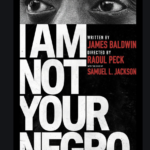

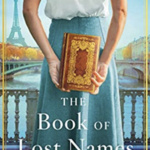
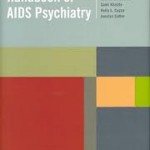
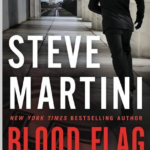
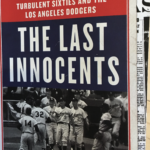
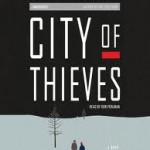
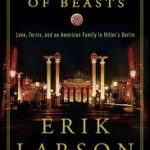
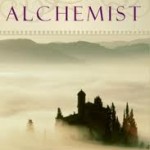








 The Storyteller by Jodi Picoult – After reading this book I reflected on where did I learn the details about the Holocaust? It wasn’t in any formal class that I took in public school or in college. It may have been in Hebrew School prior to my Bar Mitavah. It was in very general terms from members of my family none of whom that I knew of was a survivor or closely related to one. It was enhanced by books I read and movies I saw such as The Diary of Ann Frank, Schindler’s List, Sophie’s Choice plus so many more as well as some more contemporary movies that have recently emerged (and we have reviewed elsewhere) such as
The Storyteller by Jodi Picoult – After reading this book I reflected on where did I learn the details about the Holocaust? It wasn’t in any formal class that I took in public school or in college. It may have been in Hebrew School prior to my Bar Mitavah. It was in very general terms from members of my family none of whom that I knew of was a survivor or closely related to one. It was enhanced by books I read and movies I saw such as The Diary of Ann Frank, Schindler’s List, Sophie’s Choice plus so many more as well as some more contemporary movies that have recently emerged (and we have reviewed elsewhere) such as 

